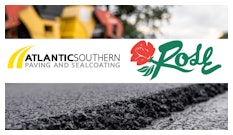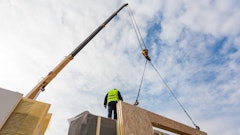
Those of us in the construction industry, whether we want to admit it or not, are faced with an unpleasant truth: we haven’t increased our productivity in more than 50 years.
According to a research brief published by the Becker-Friedman Institute for Economics at the University of Chicago earlier this year (The Strange and Awful Path of Productivity in the Construction Industry), “Despite aggregate productivity for the US economy having doubled over the past 50 years, the country’s construction sector has diverged considerably, trending downward throughout that period. And this is no slight decrease. Raw BEA data suggest that the value added per worker in the construction sector was about 40 percent lower in 2020 than in 1970.”
The fact is, construction is the only part of the overall building process, which includes architecture, engineering, manufacturing, and others, that hasn’t advanced significantly in the last 50 years. According to The Economist: “Since 1995 the global average value-added per hour has grown at around a quarter of the rate in manufacturing…no industry has done worse.”
The lack of significant productivity growth in the construction industry over the past 50 years compared to other sectors is a complex issue with several contributing factors.
Here are some key reasons:
Unlike manufacturing or technology, construction lacks a single, standardized approach. It's a fragmented industry with many small and medium-sized businesses, each with its own processes and workflows. This makes it difficult to implement large-scale changes and adopt new technologies.
Difficult, maybe. But not impossible. The fact is, the construction industry is traditionally risk-averse and resistant to change. This can make it difficult to adopt new technologies and implement new processes, even if they offer long-term benefits.
Many tasks in construction are inherently physical and require human skills and judgment. Automation, which has driven productivity gains in other industries, has limited application in construction. While some tasks like bricklaying or welding are becoming automated, the majority of construction work still requires human input.
The construction industry faces a significant skills gap and a shortage of skilled workers. This is partly due to a lack of investment in training and education, as well as an aging workforce. The shortage of skilled labor can lead to inefficiencies and delays, impacting productivity.
Extensive regulations and complex permitting processes can significantly slow down construction projects. Bureaucracy and red tape can create delays and increase costs, hindering productivity. This is very real and experienced in nearly every market. But we can’t blame the government for everything.
Compared to other industries, construction has historically invested less in research and development. This has led to a slower pace of technological innovation and a lack of new tools and methods to improve productivity. This is the real crux of the problem.
Further, the construction industry often focuses on delivering individual projects within specific deadlines and budgets. This short-term focus can discourage long-term investments in technology and process improvements that could lead to broader productivity gains across the industry. And according to a recent Freakonomics Radio podcast, “when productivity falls, prices often rise.”
The University of Chicago study’s bottom line: “Given its place in the economy, this productivity decline has real effects: Had construction labor productivity grown over the last five decades at the (relatively modest) rate of 1 percent per year, annual aggregate labor productivity growth would have been roughly 0.18 percent higher, resulting in about 10 percent higher aggregate labor productivity (and, plausibly, income per capita) today.”
In the area of this industry where I work, pavement maintenance and construction, innovation happens at a glacial pace. But it does happen. A few years ago, a biobased pavement sealer was launched in the Midwest. It has since been proliferated throughout the West Coast and adopted by municipalities, corporations, and government agencies.
This not only due to its environmental/climate benefits—which are many—but also the efficiencies it adds to the pavement construction process: it goes on extremely fast, can be applied overnight, and doesn’t require any specialized training to work with. It’s also stable and cheap to transport—somewhat of an anomaly in my industry.
This product, which is composed of soybean/botanical oils and recycled Styrofoam, can also lengthen the lifespan of asphalt by two to three times—significantly reducing labor and construction costs and freeing up money to be spent on more projects, and—dare I say it—increasing productivity.
We need to change our thinking to accept and encourage more innovations like this.
Overcoming a 20th Century mentality and achieving sustained productivity growth will require a concerted effort from all stakeholders in the industry, including policymakers, construction companies, technology providers, and training organizations. And, probably above all, it will demand a focus on investment in and implementation of new technologies in our industry. We can no longer ignore and or fight it.
Isn’t 50 years long enough?



















